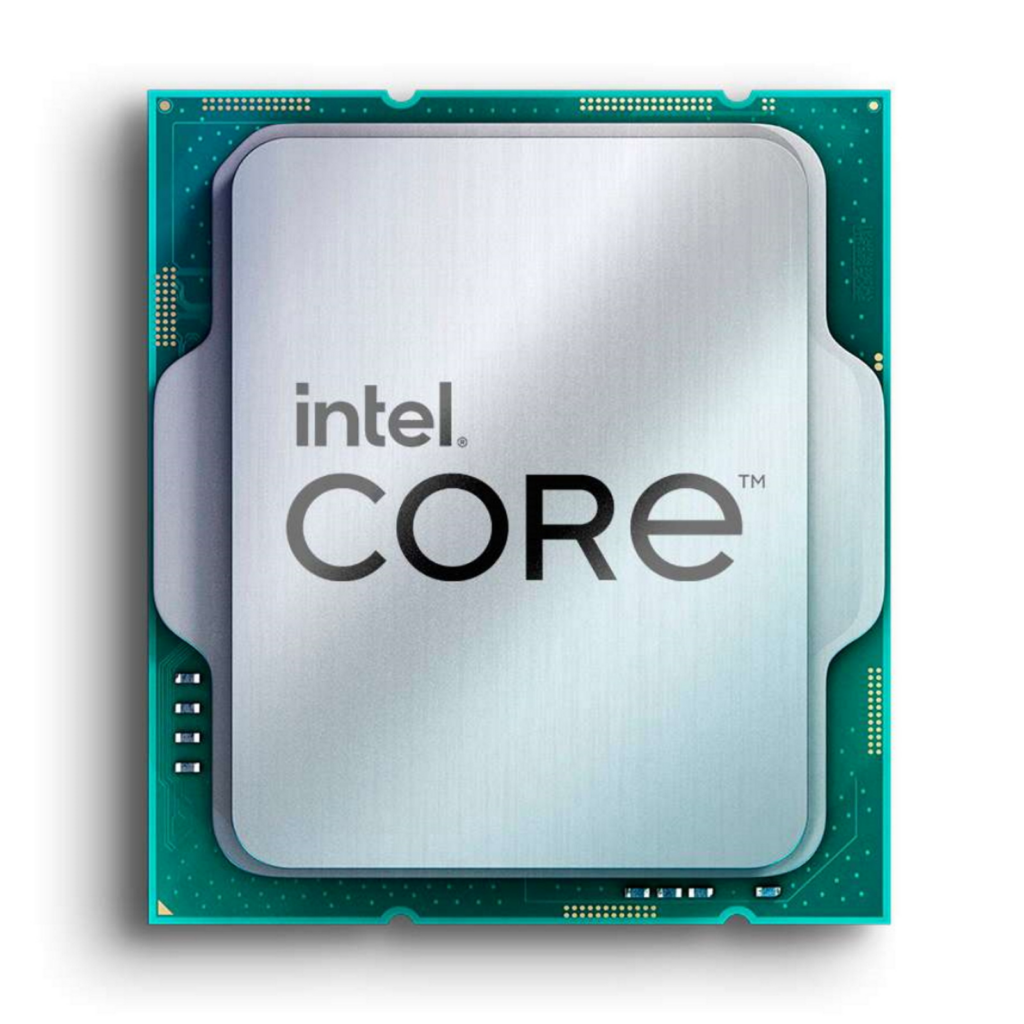We at AnandTech tend to focus on Intel’s high-end Core CPU product stacks, but the company has a much more extensive lineup than we usually have time to review. The flagship Core i9-13900K and KS SKUs have the greatest core counts, clock speeds, and overclocking capability. Intel offers various Core i7 and Core i5 SKUs, including enthusiast-focused K-series chips, for users who need fewer cores but still want performance.
Intel has more non-K series chips besides these enthusiast parts. These parts usually have a superior performance-power-efficiency balance. The Core i3 series, Intel’s cheapest, doesn’t include enthusiast variants. The entry-level i3 parts include four Performance (P) cores and no-efficiency cores, making them cheaper for non-critical workloads.
Intel only offers one i3 tier this generation, the i3-13100, which comes in three configurations: the standard version, the 35W TDP version (i3-13100T), and a version without integrated graphics (i3-13100F). At $109, the latter chip is the 13th generation Core lineup’s entry-level element.
The Core i3-13100F has 4 P cores, 12 MB of L3 cache, and a maximum turbo clock of 4.5GHz. As mentioned, this part’s main distinction is that the Core i3-13100F doesn’t have integrated graphics (Intel UHD Graphics 730) like the i3-13100, hence it’s intended for usage with discrete graphics.

Is Intel’s 13th-generation Core series’ cheapest SKU worth buying? Is the i3-13100F powerful enough for budget users? Today we’ll explore if the Core i3-13100F can take the quad-core crown and compare it against Intel and AMD’s entry- to mid-range products.
Alder Lake Refresh vs. Intel Core i3-13100F?
Intel and AMD provide entry-level Core i3 and Ryzen 3/5 series processors. While we’ve seen a lot of these high-end and flagship SKUs from both sides over the previous couple of months, the entry-level range may offer the best value, especially for budget-conscious gamers.
The Core i9/i7 series will certainly execute video rendering and encoding faster than an i3 with four P cores. The Core i9/i7 series is better for enthusiasts and professionals who need more than four cores, but not everyone does.

For consumers who don’t expect to conduct heavy workloads but need a functioning system with solid performance at a lower cost than Intel’s higher-end chips, the Intel Core i3-13100F is an appealing option. Four performance cores with Intel’s Golden Cove microarchitecture power it.
| Intel Core i3 Specifications | ||||||||
| AnandTech | Cores P+E/T | P-Core Base | P-Core Turbo | L3 Cache (MB) | iGPU | Base W | Turbo W | MSRP ($) |
| i3-13100 | 4+0/8 | 3400 | 4500 | 12 | 730 | 60 | 89 | $134 |
| i3-13100F | 4+0/8 | 3400 | 4500 | 12 | – | 58 | 89 | $109 |
| i3-13100T | 4+0/8 | 2500 | 4200 | 12 | 730 | 58 | 69 | $134 |
| i3-12300 | 4+0/8 | 3500 | 4400 | 12 | 730 | 60 | 89 | $143 |
| i3-12300T | 4+0/8 | 2300 | 4200 | 12 | 730 | 35 | 69 | $143 |
| i3-12100 | 4+0/8 | 3300 | 4300 | 12 | 730 | 60 | 89 | $122 |
| i3-12100F | 4+0/8 | 3300 | 4300 | 12 | – | 58 | 89 | $97 |
| i3-12100T | 4+0/8 | 2200 | 4100 | 12 | 730 | 35 | 89 | $122 |
The Core i3-13100F performance cores have a 3.4 GHz base clock and a 4.5 GHz all-core turbo. The Core i3-13100/13100F shares the same cores, 12 MB of Intel Smart L3 cache, and 89 W turbo power rating as last year’s Core i3-12300. The top Intel 12th Gen Core i3 and the latest 13th Gen Core i3 differ by 100 MHz in base clock and turbo clock speeds. All of Intel’s 13th and 12th Gen Core i3 series CPUs offer DDR5-4800 or DDR4-3200 memory, giving budget-conscious users more platform compatibility options.
Given that the Core i3-13100F and Core i3-12300 feature the identical Golden Cove cores, extremely similar core clock rates, and similar TDPs, the 13th Gen Core i3 series is virtually a 12th Gen refresh, and it’s hard to refute that point. However, Intel has streamlined its i3 product stack for this generation of CPUs. The 13th Gen Core i3’s 13100 SKU replaces the 12th Gen’s (12)300 and (12)100 SKUs. Though there are three i3 models, this generation only offers one performance level. Today, we’re evaluating the ultra-budget Core i3-13100F sans integrated graphics.
The Core i3-13100F is a straightforward improvement in Intel’s CPU stack, especially at its current street price of $100. It has the same cores, clock speeds, and everything else except the iGPU. For $97, the Core i3-13100F offers 200 MHz greater turbo headroom than the Core i3-12100F. Otherwise, Intel’s official MSRPs aim to place the i3-13100F as a higher-tier chip, but with consumer tech spending decreasing, it has little alternative except to slot in at $100 if it wants to advance faster.
The retail 13th Gen Core i3 series CPUs also come with Intel’s Laminar RM1 stock cooler, like the 12th Gen. An 89 W CPU doesn’t need an AIO or a full-tower cooler like the Noctua NH-D15, therefore this minimizes system cost and is an excellent option. The Intel Laminar RM1 cooler lacks RGB and LEDs. The Core i3 series is meant to give mainstream computational performance at an affordable price.
Entry-Level: Core i3-13100F vs. AMD Ryzen 3 5300G
Intel’s entry-level 13th Gen Core i3 components are substantially cheaper than AMD’s flagship Ryzen 7000 series. Intel isn’t competing with a current-generation AMD CPU because AMD hasn’t launched any Ryzen 3-grade quad-core chips for their Ryzen 7000 series.
The latest AMD Ryzen CPU with four cores is the OEM-only Ryzen 3 5300G, released in 2021. The Zen 3-based CPU, AMD’s budget processor and direct competitor to the i3-13100F, costs $100 at Amazon.

The good news for Intel is that the 13th Gen i3 processors are facing older Zen 3 designs, not AMD’s better Zen 4 hardware, so this is simply the Alder Lake against Zen 3 quad core duel again, which Intel won last time. Intel’s bad news is that AMD’s $100 processor has a decent integrated GPU, giving it an advantage on cheap systems.
If not, AMD’s Ryzen 5 5500G ($138) is the six-core variant of the 5300G’s chip. These inexpensive processors get two CPU cores, but the $38 price increase is equally considerable.
Ryzen 5 7600 ($229) is AMD’s lowest Zen 4 CPU. At over twice the price of the i3-13100F, there’s a glaring price-performance gap. With six Zen 4 CPU cores turboing up to 5.1GHz, it deserves a place at the table, if only for the spoiler effect.
Budget gamers will like the Core i3-13100F. The Core i3-13100F and other 13th Gen Core processors have cheaper motherboards and a lower price than AMD Ryzen 7000 processors. To level the playing field, we tested the Core i3-13100F and all of Intel’s 13th Gen CPUs with JEDEC-specified DDR5-4800 memory.
Current CPU Test Suite
Our Intel Core i3-13100F testing system:
Our 2023 CPU suite contains benchmarks, tests, and workloads to compare processor and architecture performance. UL’s latest Procyon suite, CineBench R23, Dwarf Fortress, Blender 3.3, and C-Ray 1.1 simulate office and photo processing workloads to analyze performance.
| Intel 13th Gen Core System (DDR5) | |
| CPU | Core i3-13100F ($109) 4 Cores, 8 Threads 58 W Base TDP 89 W Turbo TDP |
| Motherboard | MSI MPG Z790 Carbon WIFI |
| Memory | SK Hynix 2×32 GB DDR5-4800 CL40 |
| Cooling | EKWB EK-AIO Elite 360 D-RGB 360mm |
| Storage | SK Hynix Platinum P41 2TB PCIe 4.0 x4 |
| Power Supply | Corsair HX1000 |
| GPUs | AMD Radeon RX 6950 XT, 31.0.12019 |
| Operating Systems | Windows 11 22H2 |
We’ve also carried over certain CPU 2021 benchmarks that are still relevant/enlightening. Dwarf Fortress, Factorio, and Dr. Ian Cutress’s 3DPMv2 are examples.
In 2023 and beyond, we added F1 2022, Total War: Warhammer 3, and Hitman 3.
